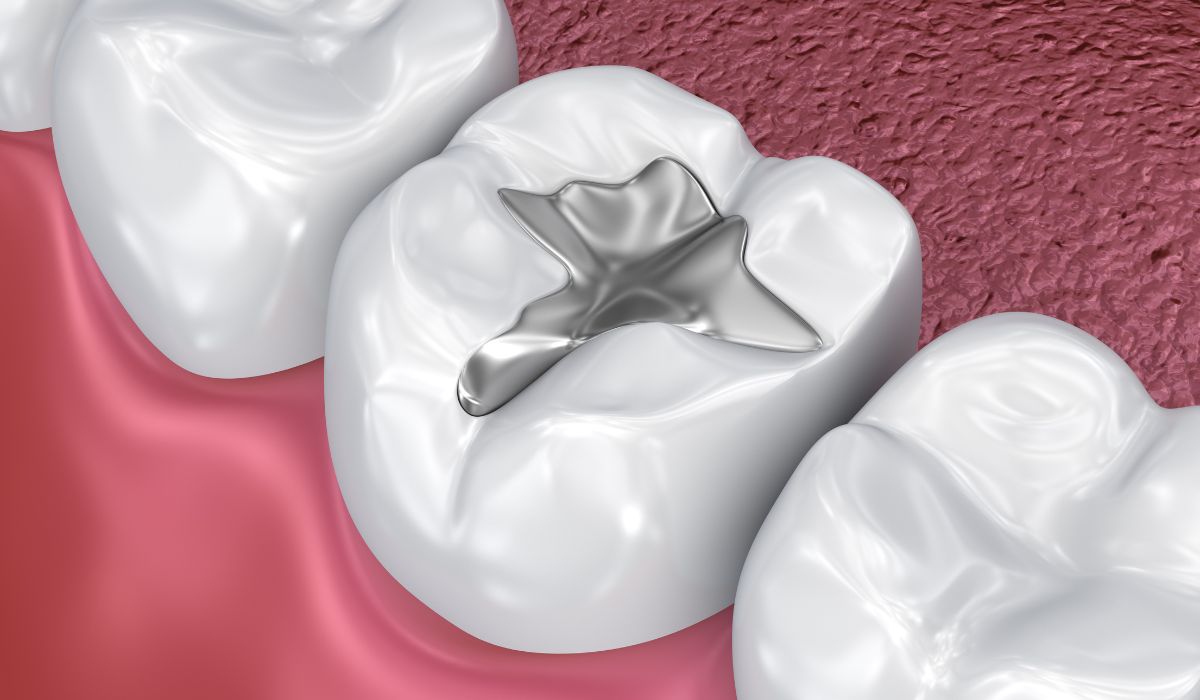Dental treatments are essential for maintaining a healthy and appealing smile. Have you ever found yourself staring at a chipped tooth or a small cavity, wondering about your options? With so many treatment choices available, choosing which is best for your specific needs is difficult. One common dilemma people face is choosing between dental bonding and fillings.
Both are excellent methods for restoring broken teeth, but they serve different functions and have distinct advantages. So, how do you pick between Bonding vs Fillings? Let’s explore their differences and advantages. By the end, you will have a clear understanding of which treatment is suitable for your dental needs.

Dental bonding is a cosmetic dental treatment that involves applying a tooth-colored resin material to the tooth and hardening it using a specific light. This procedure can be employed to fix chipped, damaged, or discolored teeth, fill gaps, and make teeth look longer.
Bonding is a straightforward procedure typically accomplished in a single visit. What is the best part? Dental bonding is a painless procedure that requires little to no anesthesia unless it is done to fill a severely decayed tooth.
To compare Bonding vs Fillings, it’s essential to weigh their perks. Tooth bonding is a versatile and cost-effective treatment for a number of tooth problems. Here are the most common benefits of dental bonding
Dental fillings are used to treat cavities or tooth decay. When germs erode your tooth enamel, tiny holes called cavities emerge, leading to more dental issues if not addressed on time. Did you know 1 in 4 adults aged 20 to 64 has at least one untreated cavity? A dental filling rebuilds the tooth’s structure, preventing additional decay and promoting oral health.
Unlike dental bonding, which is purely cosmetic, fillings are necessary treatments for cavities. They can be composed of various materials, such as composite resin fillings, silver amalgam, gold, or porcelain. Understanding the basics of two procedures is necessary to compare Bonding and Fillings.
Fillings function by preventing further decay and restoring the tooth’s normal function. Here’s why fillings can be your best option:
Now that you know the basic differences between dental bonding and fillings, it’s time to answer the important question: Bonding vs Fillings — which one should you choose? The answer is based on your specific dental needs. Let’s examine how these two procedures differ and when each might be more appropriate.
Dental bonding is probably the preferable option if you want to improve the appearance of your smile and don’t have any structural issues like cavities. Bonding can treat a wide range of cosmetic dental issues, including:
Furthermore, dental bonding is suitable for individuals seeking a rapid, non-invasive, cost-effective procedure. However, bonding cannot last as long as other procedures, so you may need to have it touched up after a few years.
Dental fillings are important for treating cavities and tooth decay. If you have any decay, your dentist will most likely advise a filling to keep the decay from deteriorating. Here’s when a filling is the best option:
While dental fillings are primarily a functional procedure, composite fillings can be tooth-colored, so they will not detract from your smile’s appearance.
The ultimate decision is whether you want cosmetic improvement( in which case bonding is an excellent option) or to treat a decaying or damaged tooth ( in which fillings are more appropriate. If you are confused, consult with one of the best dentists in NJ, for personalized advice.
Cost is an important consideration when choosing between dental bonding vs fillings. The good news is that both treatments are reasonably priced, especially when compared to more invasive ones like crowns or veneers.
Dental bonding is often less expensive than fillings, with rates ranging from $200 to $500 per tooth, depending on the complexity of the case, location, and dentist’s experience. Simple cases like small chips will be less expensive, while more extensive bonding can cost more.
Moreover, dental bonding is usually classified as a cosmetic treatment. Thus, insurance coverage can be limited unless the bonding is necessary for practical purposes such as repairing a chipped tooth.
In contrast to bonding, the cost of dental fillings varies according to the materials utilized. Composite fillings cost between $150 and $400 per tooth, but amalgam fillings are less expensive, ranging from $50 to $400. High-quality materials such as gold or porcelain can cost up to $1800 per tooth.
The size and area of the cavity influence the cost since larger fillings can require more material, time, and expertise. The good news is that fillings are generally covered by insurance since they treat tooth decay and are, therefore, an essential treatment.

When weighing dental bonding vs fillings, it’s important to know that each treatment serves a different purpose. In short, dental bonding is perfect for people who want to improve the appearance of their smile, whereas fillings are necessary for people who have cavities or decay.
Improve your smile with professional dental bonding in NJ, at Hesed Dental Clinic. Our skilled team, known as the best dentists in NJ, is committed to providing top-quality, customized dental care. So book your appointment online or call us at 201 941 8877.
Do you have a toothache or think you may need a root canal? Call or find us online for a convenient appointment at Hesed Dental Clinic. Our skilled, professional staff is ready to gently and efficiently treat your dental issues. We are located at 543 Gorge Road, Cliffside Park, NJ 07010. We look forward to helping you restore optimal dental health and a natural, beautiful, pain-free smile.

Hesed Dental 543 Gorge Road Cliffside Park, NJ 07010
201 941 8877